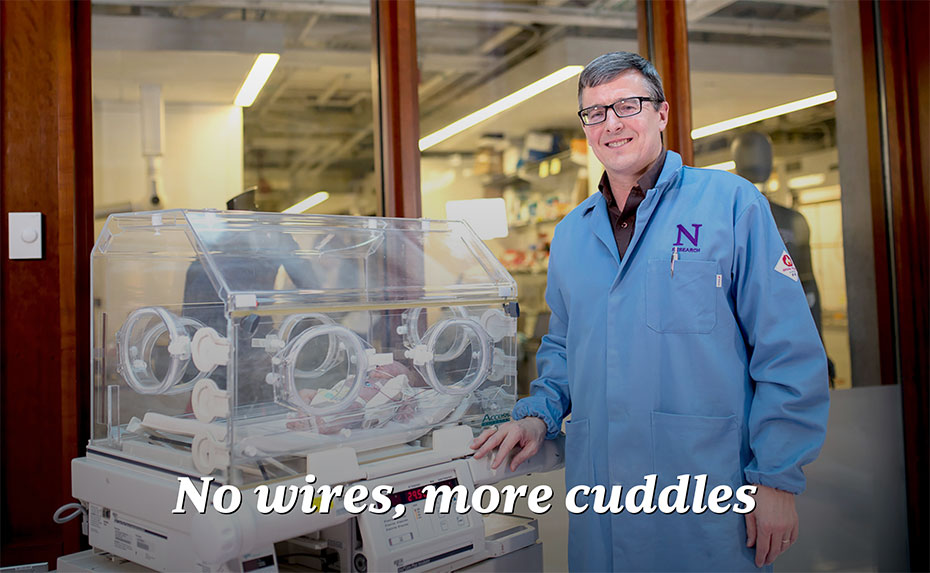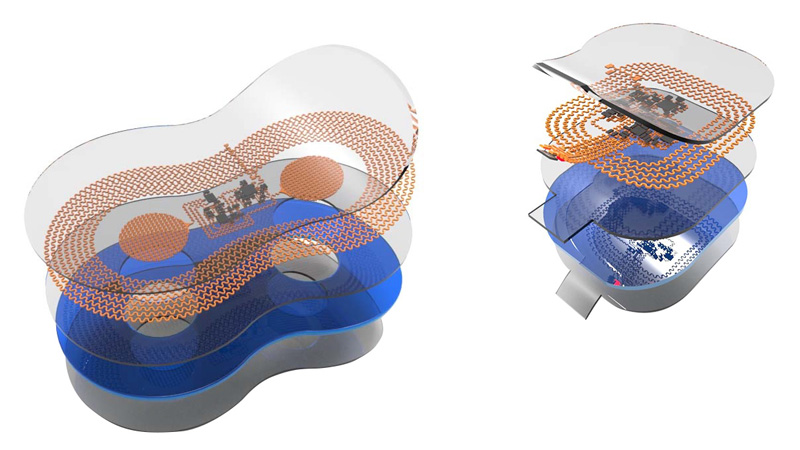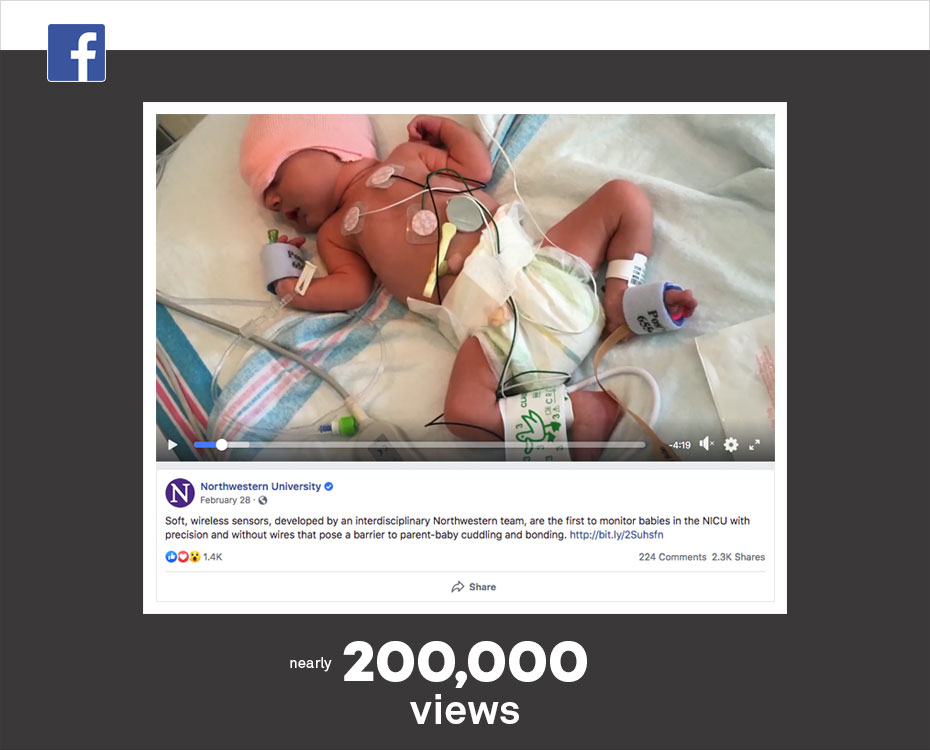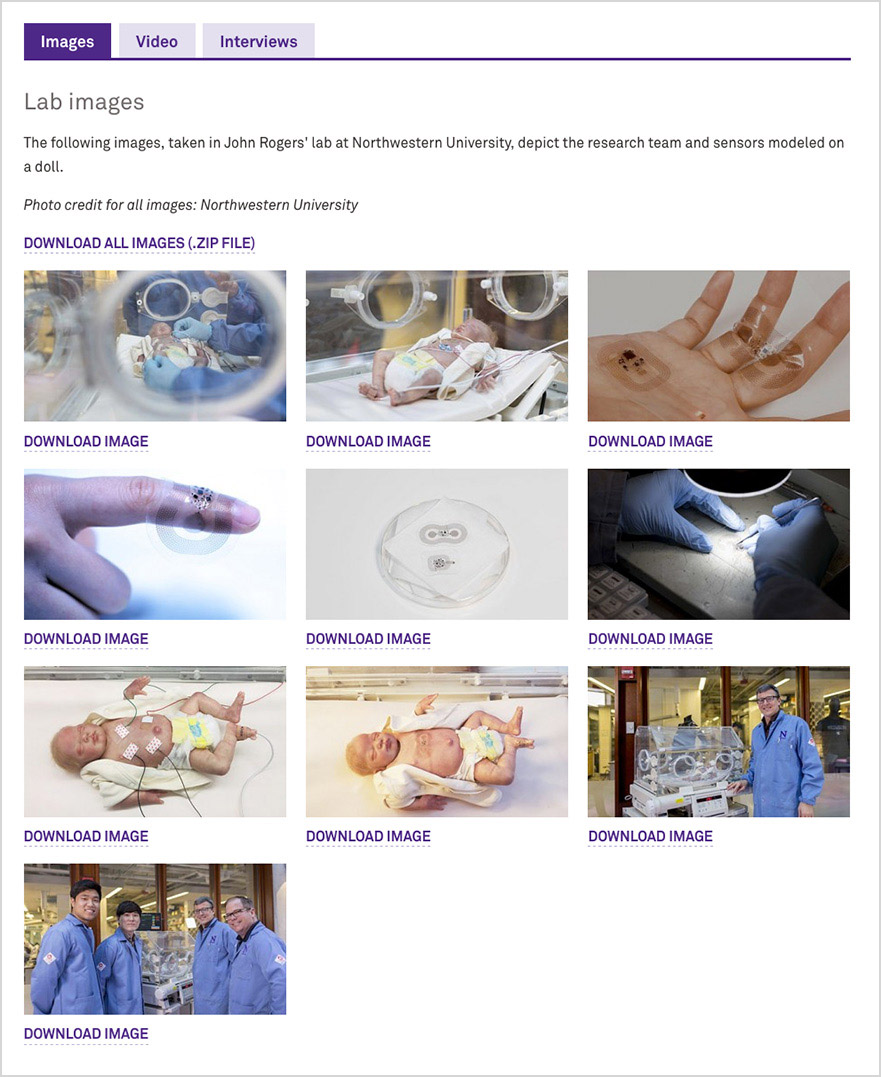NICU Sensors
An interdisciplinary team of Northwestern University researchers collaborated to develop a pair of soft, flexible wireless sensors to replace the tangle of wire-based sensors that currently monitor babies in hospitals’ neonatal intensive care units (NICU). Our team promoted this groundbreaking research by developing several media-ready pieces and promoting across platforms.
News Story
Our team crafted an in-depth article to tell the full story behind the research that went into developing the NICU sensors. It featured interviews with the researchers involved and affected parents.
Custom Graphics
Side-by-side graphic and interactive imagery give readers a quick, skimmable overview of Northwestern’s sensor’s capabilities versus traditional sensors’ capabilities. Another graphic shows the sensor’s inner workings by boiling down complex technology into easy-to-glean information. It also gives readers a rare sneak-peek inside the new technology.

Traditional NICU sensors versus Rogers’ wireless sensors as modeled on a doll
Video
Social Media
We edited a shorter video for our social media channels. With nearly 200k views, it is currently the most-viewed video on Northwestern’s Facebook page.
View Post
News Release and Multimedia Press Kit
We produced a full news release and interactive press kit, including b-roll, graphics, soundbites and fully produced video. These assets were used by several media outlets, including the Associated Press, which used our b-roll in their video.
News Coverage

Results
- 528 online news clips
- 593 broadcast mentions
- 354 million potential reach (online and broadcast)
- 185,00 video views on Facebook
Northwestern Magazine Profile
Our team followed the success of the NICU sensor effort with additional evergreen storytelling, profiling Rogers in the Winter 2021 issue of Northwestern Magazine. This profile pulled together many of the innovations and inventions coming out of the Rogers Lab, and took audiences inside the mind, and lab, of Rogers himself. We created a full multimedia experience with multiple executions and entry points into the story that we utilized across all social media channels.
Animated Video
Our team produced and animated in-house a motion graphic-driven video based on the full-page illustration commissioned by Northwestern Magazine to highlight just a few of Rogers’ inventions, as well as the breadth and depth of his work across the whole human body.
PSA
Our team internally re-edited the video to work as a :30 second TV spot. We wrote a new narrative to fit with our overall “Take a Northwestern Direction” campaign, incorporated footage from multiple other projects we’ve undertaken over the years with and for Prof. Rogers, and generated a custom URL to encourage TV viewers to seek out the story and be aware of the extensive digital magazine storytelling.
Results
Across all social channels, our executions in support of the profile resulted in a cumulative reach of 246.2K, 15.7K video views and 657 engagements.
And while driving traffic was not the goal of the broadcast PSA, our team set up a custom URL for any viewer interested in learning more and experiencing the digital magazine. In the end, the PSA drove 128 unique pageviews the first weekend the PSA aired.
Overall, the digital version of the profile received 4.6K+ UPVs on the magazine site, along with an exceptional 4:33 time on page average.



